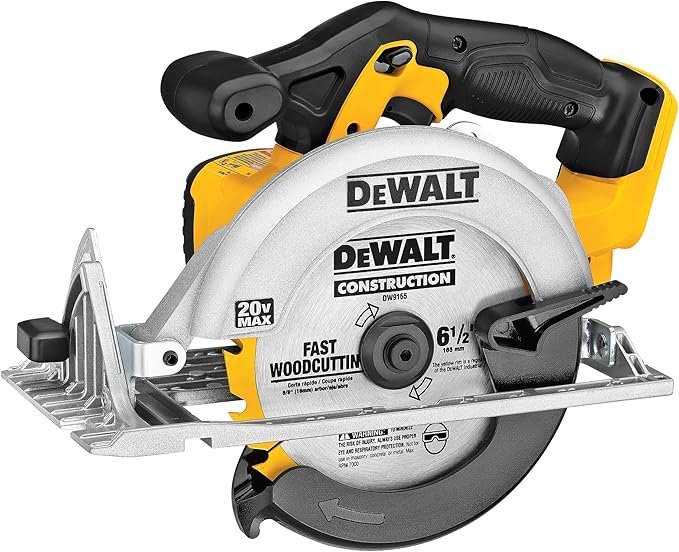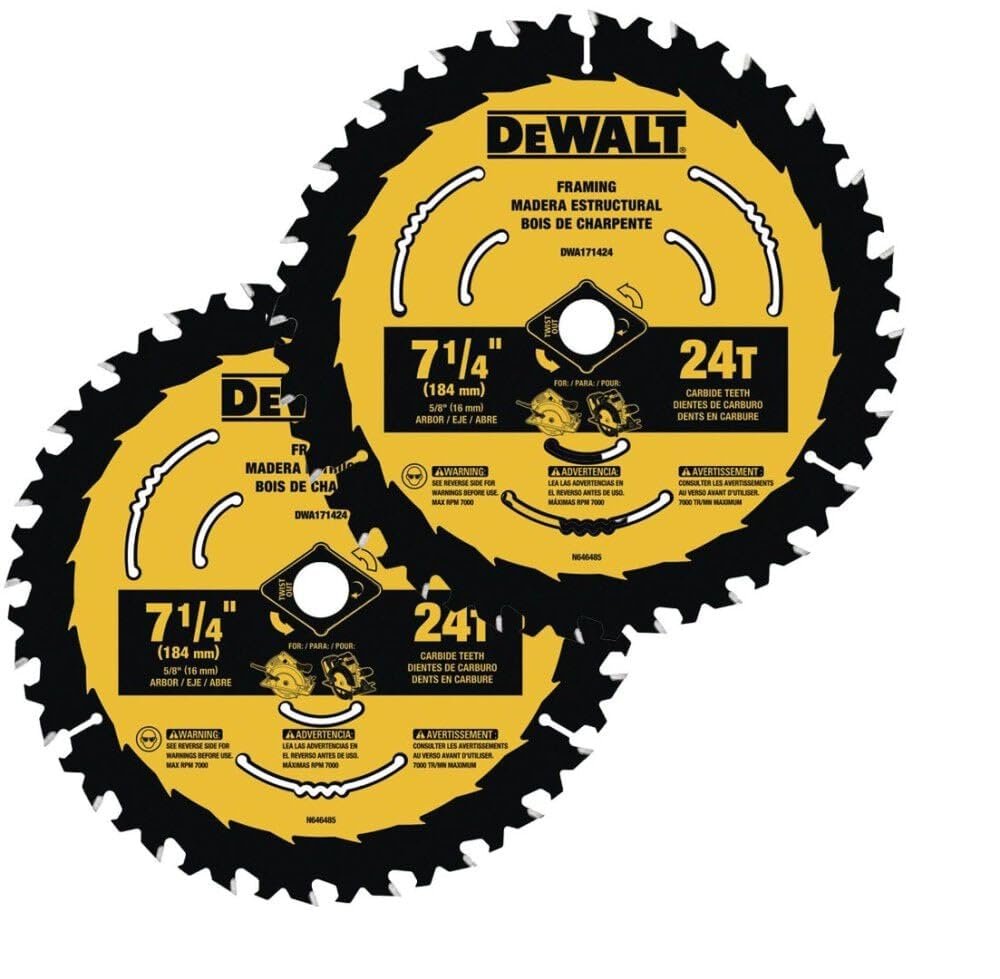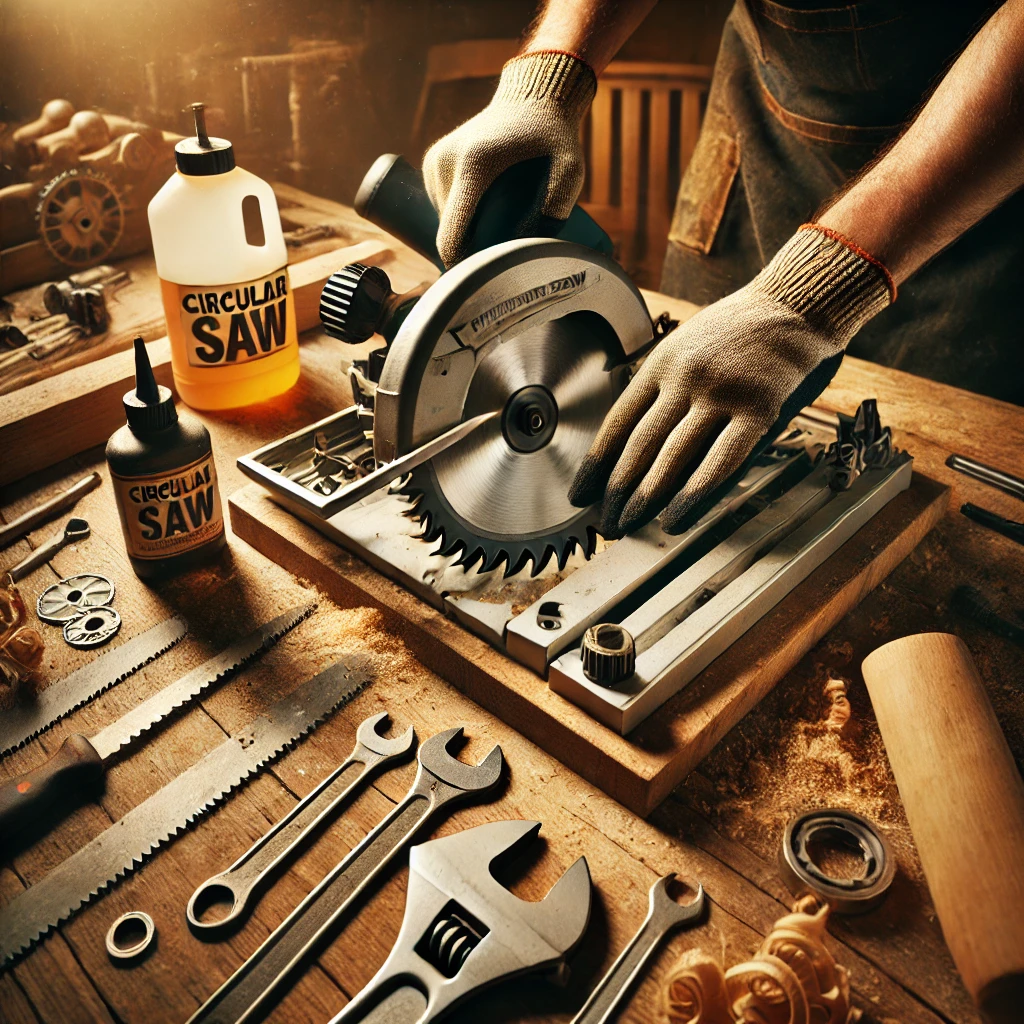
Understanding the Circular Saw
“Learn essential tips for using, maintaining, and safely operating a circular saw. From blade types to safety measures and cutting techniques, master this woodworking tool.”
The circular saw, a versatile instrument prevalent in woodwork, enables efficient severing of various materials. Its architecture embraces an array of vital elements, working harmoniously to achieve cutting tasks. The operation and performance of a circular saw heavily rely on each of its components. The saw blade is significant in this, with different types and sizes geared towards specific tasks. The blade — designed for rip cuts, crosscuts or specialized actions like slicing through metal or laminates greatly influences the quality and accuracy of the completed cut.
In addition to this, the base plate or shoe provides the support for the tool, playing a crucial role in the stability during operation and the precision of cuts. A properly aligned base plate ensures the accuracy of the blade’s path. Some models feature modifiable bases for beveled cuts, adding flexibility. The circular saw’s motion banks on either a corded or cordless engine, dictating its overall chopping speed, torque, and ability to deal with an array of wood densities. Regular power supply is an advantage with corded options whereas wireless models add mobility and functionality in isolated locations.
The choice of power supply significantly affects a circular saw’s functioning. Cordless models add convenience but might constrain runtime and performance as compared to wired ones. Being aware of these variances is critical for individuals looking for top-notch performance suited to their respective needs. Safety features like blade guards and electric brakes are equally critical as they play a significant role in ensuring safer operations. Understanding these aspects of the circular saw equips users with basic knowledge for efficient wood chopping.
Essential Safety Measures While Operating a Circular Saw
While operating a circular saw, safety takes precedence for successful woodwork and reducing accident risks. Fundamental safety standards include appropriate personal protective equipment (PPE) such as safety goggles – saving your eyes from flying particles, earmuffs or earplugs – to subdue noise, and gloves – providing a steady grip. It’s important to choose gloves devoid of loose material as it could possibly get tangled in the saw’s moving parts.
Before starting any chopping task, a comprehensive review of the circular saw is mandatory. This includes an examination of the blade for sharpness and any damage indications like chips or cracks. A dull or damaged blade may result in not just inaccurate cuts but also risk a kickback, a dangerous event where the saw suddenly recoils towards the operator. Essential also is to ensure all safety guards are correctly placed and operational for a safe experience.
Proper posture and positioning while using the saw significantly decrease accident likelihood. Stand with feet placed at shoulder-width for stability, with a tight grip on the saw using both hands. Keep your body behind the saw while cutting, never leaning over the blade. Furthermore, an obstacle-free workspace is critical; ensure the area is clutter-free and bystander-free. This allows for better focus, minimizing unplanned accidents.
Faithful adherence to these safety precautions bolsters individual confidence while operating a circular saw, thus lowering the chances of mishaps while ensuring efficiency.
Cutting Techniques with a Circular Saw
For getting the most out of a circular saw in different woodwork settings, using various cutting techniques becomes essential. Mastery over these methods ensures precision and boosts overall work quality. A key technique is the straight cut, suitable for making long or short cuts across wood grains. To attain a straight cut, use a guide or a straight edge that can maintain a steady line and ensure accurate cuts.
The bevel cut allows for sloping cuts at an angle other than 90 degrees — significantly useful in joint creation for furniture or projects requiring angled wood pieces. Before cutting adjust the angle-setting lever on the saw base for a bevel cut. Accurate measurements and markings are necessary for reaching the perfect angle. For ideal results, try making a test cut on a waste wood piece before the final material.
Plunge cuts are handy for starting a cut from the middle of the board rather than the edge. This becomes beneficial for creating openings or depressions in wood. To conduct a plunge cut, suitably set the blade depth and lower it into the wood carefully. Steadiness during the process enhances control and results in cleaner cuts. Precise measurement and marking before any cuts start also remains crucial. Marking twice using a pencil provides clarity throughout your project, ultimately raising the chances of successful conclusions.
Maintenance for Tall-standing Circular Saws
Regular maintenance is critical to keep your circular saw in prime condition. One of the main chores is cleaning the blade after every use. Resin deposits and sawdust might pile up on it, hampering its performance and cutting efficiency. A blade cleaner or soap solution can efficiently clean this debris and restore blade sharpness. Absence of damage signs like chips or dullness needs checking as these might necessitate sharpening or replacement.
Apart from blade upkeep, confirmation of circular saw alignment is critical due to misalignment causing uneven cuts and added motor stress. To ensure right alignment, perform a simple examination by conducting some test cuts on waste wood and then examining them. If cuts appear irregular adjustments will be necessary as per manufacturer’s guide. Inspecting electrical elements for wear and tear becomes critical for safety, always keeping an eye out for frayed cords and damaged switches – all issues need immediate attention to avoid risks.
Maintenance extends to how you store your circular saw. When not in usage, proper storage protects the tool from environmental factors and physical damage. Ideally, keep it dry, away from moisture to prevent rusting. A dedicated storage case or a wall hanger minimizes accidental falls and collisions, preventing damage. Regular maintenance and suitable storage practices make sure your circular saw stays trustworthy, promising long-term service and efficiency in your woodwork projects.
Disclaimer: This article contains affiliate links at no cost to the reader, Fuzzy may earn a commission.











